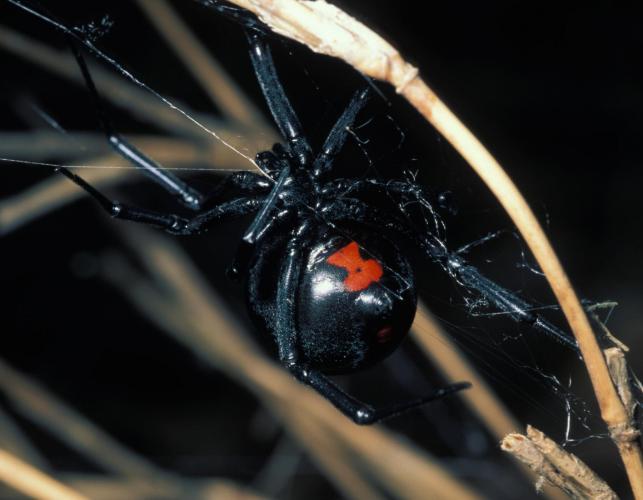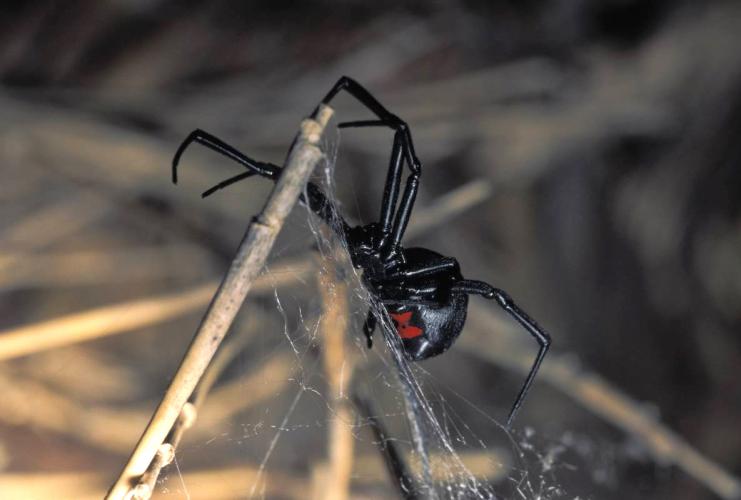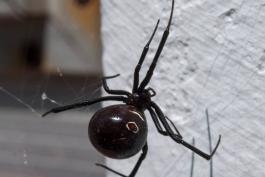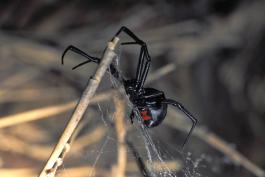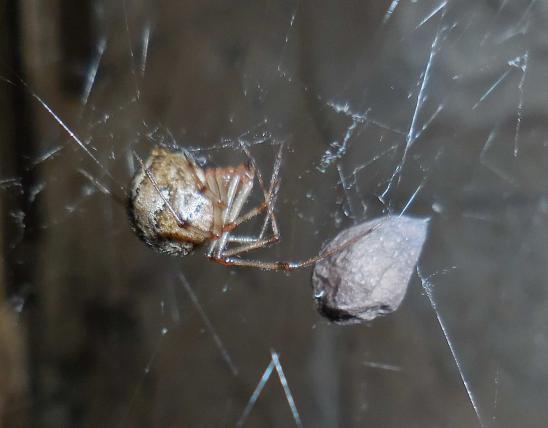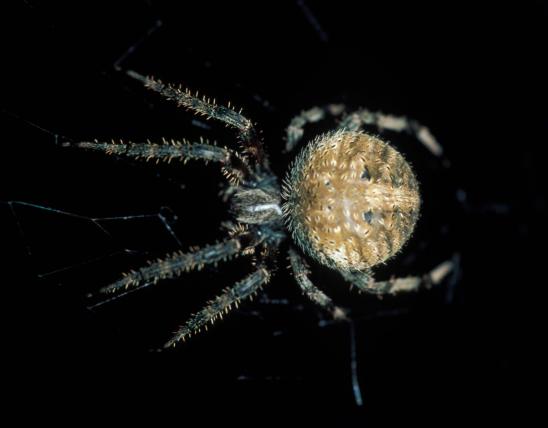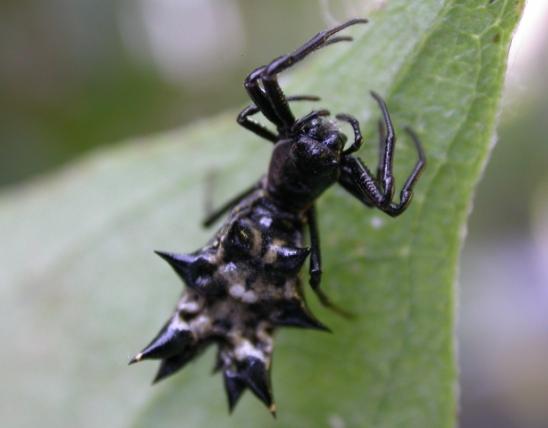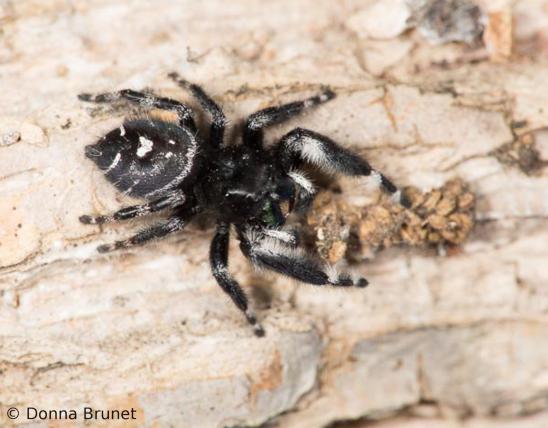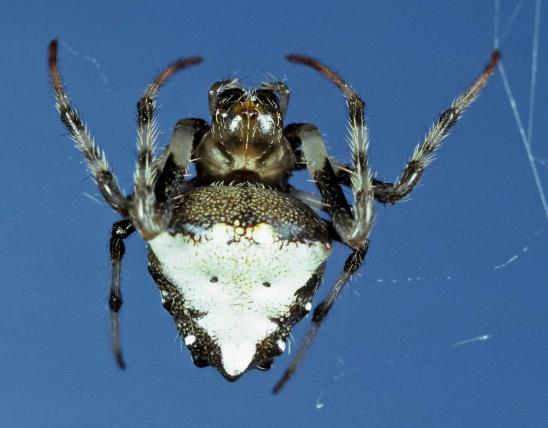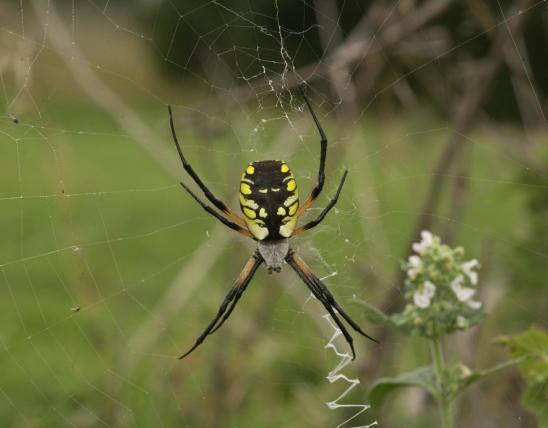
The glossy, black-bodied female black widow has distinctive red spots on the underside of her abdomen, often described as an hourglass shape because it often looks like two triangles pointing at each other. Sometime there are markings on the back (dorsal) side of the abdomen, too.
Missouri has two species of black widows:
- In females of the southern black widow, Latrodectus mactans, the hourglass marking has both parts of the hourglass connected.
- In females of the northern black widow, L. variolus, the hourglass is broken; also, this species usually has a row of red spots down the back (the dorsal side, not the underside), which can be faint or bold, and also sometimes some diagonal whitish markings on the sides.
Males are smaller than females and usually have faint red or white spots on the top of the abdomen, too. Males are usually only seen when they are visiting a female in her web.
The web of black widow spiders is sticky and distinctively strong. With only a little experience, you can learn to recognize a black widow's web just by touching it.
Only the sedentary female is capable of inflicting a potentially dangerous bite; the smaller, wandering, and seldom-seen male is harmless.
Black widows are timid and usually flee when disturbed, but they will bite if provoked.
Length: females to about ⅜ inch (not counting legs); males grow to less than half this size.
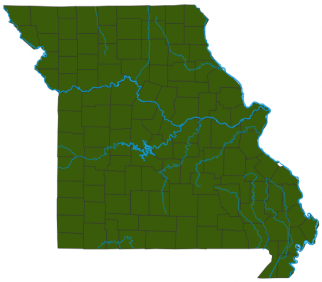
Both species occur statewide, although L. mactans is more common in southern counties.
Habitat and Conservation
The black widow female most often makes her irregularly shaped, rather tangled web under flat rocks, logs, along embankments, near foundations, or in outbuildings. The web has a tiny funnel into which the spider can retreat if bothered. L. variolus makes its web in open woods.
Food
The black widow's prey includes flying and climbing insects that become entangled in its web. They have also been known to capture and kill small vertebrates, such as lizards and small snakes.
Status
Black widow bites are serious. Be careful if you are working in places where these spiders live.
If you are bitten, collect the spider if you can and seek medical attention immediately. A black widow spider bite frequently results in severe pain, muscle cramps, abdominal pain, back pain, and hypertension. Discomfort can last several days and may be relieved through medical treatment. There are no known cases of death resulting from a black widow bite in the United States. Globally, only three cases of deaths associated with widow spiders have been reported, and these are from different species than are found in Missouri.
Life Cycle
Like most other spiders, eggs hatch in spring and young spiderlings disperse and begin the process of growing up. Females build webs to catch prey; males do not. Often the male is killed and eaten by the female directly after mating, a habit that gave these spiders their common name. Scientists have shown that the males, having done their job of fertilizing the females, essentially feed their future families through this "sacrifice." Adult spiders are killed by the first freezes, and egg cases overwinter.
Human Connections
You will probably want to kill widows where they can easily come in contact with people and pets, but please tolerate them in nature. They’re not aggressive and usually try to flee.
Biotechnologists are studying the chemistry of black widow silk because of its remarkable strength and flexibility.
Remember that nearly every species of spider uses a venomous bite to subdue its prey. There are only a few kinds, such as the black widow and brown recluse in our state, whose venom can be medically significant for humans.
Ecosystem Connections
Black widows, like other web-building spiders, control insect populations.
Despite their ferocious stereotype, black widows are preyed upon by numerous other creatures. In fact, blue mud dauber wasps prefer to hunt immature black widows and provision their nests with them.
It's not just female black widows that can consume their mates. Among most types of spiders, courtship is a delicate procedure and very risky for the male. Male spiders are usually smaller than females and must approach the relatively gigantic, ever-hungry, often nearsighted females in their webs. Male spiders typically advance slowly, plucking or tapping the web in ritualized patterns to communicate their intentions to the female. One false move and they could quickly be a goner.
